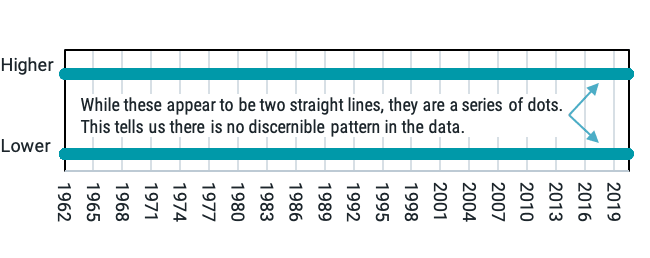What's Up with Interest Rates?
LIBOR. The Federal Funds Rate. Treasury Yields. There are lots of interest rates, and it seems like hardly a day goes by without headlines about current interest rates and where they might be headed. But it’s important to differentiate between rates set by a committee and those determined in the open market.
For example, the Federal Open Market Committee (FOMC) sets the federal funds rate. So, when you see a headline about the “Fed” raising or lowering rates, the reference is to this committee within the Federal Reserve system. The federal funds rate is a target interest rate meant to serve as a guide for what banks charge other banks to lend cash overnight.
Why would a bank be interested in borrowing cash from another bank for just one night? By law, banks must keep a certain percentage of their total deposits in cash or with a Federal Reserve bank. The Fed can use this reserve requirement and the federal funds rate as tools to influence the money supply to help support a healthy economic environment.
In this column, we will zero in on (no pun intended) Treasury yields, or the interest rates associated with U.S. government-issued debt. This debt matures (or comes due) at different points in the future, from a few weeks out to several decades. The Treasury yield curve, shown in Figure 1, offers a snapshot of current yields for U.S. government-issued debt across various maturities. Relative to one year ago, yields across all maturities are lower.
FIGURE 1 | TREASURY YIELDS ACROSS ALL MATURITIES ARE LOWER IN 2020 VS. 2019

Data as of 10/25/2019 and 10/26/2020. Source: Federal Reserve Economic Data.
Interest rates changing over longer and shorter periods isn’t a new phenomenon. To demonstrate this, we focus on slightly longer-term Treasury yields. In Figure 2, we plot the yield on 10-year Treasuries going back to 1962. Bond holders care about interest rates because, all else equal, when interest rates rise (fall), the prices of the bonds they hold decrease (increase). The further out into the future the maturity date(s) of the bond(s) they hold, the more sensitive their prices tend to be to changes in interest rates.
More recently we have been in a low interest rate environment, and investors may wonder what’s next for interest rates. A natural question is whether today’s interest rate level tells us anything about the probability of rates being higher or lower in the future. For example, when interest rates are high, does that mean there’s a higher probability that rates will be lower in a month?
We ran a simple experiment to see what the data tells us. We looked at the full set of data on 10-year Treasury yields from Figure 2 and compared each day’s yield with the yield 30 days into the future. If rate changes are unpredictable with a similar probability of going up or down relative to today, we will observe rate increases 50% of the time and decreases the other 50% of the time, with no pattern in the data. Any day will have a 50/50 probability of having higher/lower rates than the rate the previous month.
Over the full sample, this is almost exactly what we observe. For each day going back to 1962, the actual interest rates 30 days into the future were higher 49% of the time and lower 51% of the time.
FIGURE 2 | INTEREST RATES HAVE VARIED SIGNIFICANTLY OVER TIME

Data from 1/2/1962 – 10/22/2020. Source: Federal Reserve Economic Data.
But this still doesn’t address patterns in the data. The aggregate 50/50 chance may show up in clusters or another kind of discernible pattern. How might that look? In Figures 3.A and 3.B, we show a hypothetical time series of outcomes. While both show possible cases with a 50/50 change on aggregate, Figure 3.A shows a pattern in the data (where the outcomes are more clustered), while there is no pattern in Figure 3.B.
FIGURE 3.A | HYPOTHETICAL PATTERN OF INCREASES OR DECREASES IN RATES

FIGURE 3.B | EQUAL CHANCE OF INCREASES OR DECREASES IN RATES EACH DAY

Hypothetical illustration. Source: Avantis Investors.
Figure 4 shows the outcome of the pattern analysis described in Figures 3.A and 3.B but uses historical data from 1962 to 2020. The observations are similar to Figure 3.B, implying that any day has a 50/50 probability of higher/lower interest rates than the previous rate. There is no discernible pattern in the data for good reason. If there were a pattern in the data, that pattern would provide information to traders and the rates would move with the trading on that information until an equilibrium rate was found with no “arbitrage” opportunity.
FIGURE 4 | IS 10-YEAR YIELD HIGHER/LOWER 30 DAYS AHEAD?

Data from 1/2/1962 – 10/22/2020. Source: Federal Reserve Economic Data.
What’s the takeaway for investors? The exact future path of interest rates is unknown, so attempting to add value by reallocating the portfolio due to “expected” changes in interest rates may not provide the desired outcomes. An alternative way to add value in a fixed income allocation is to hold a diversified set of bonds within a given maturity range and consider additional information beyond current yields, such as expected capital appreciation, when deciding what to hold.
In any case, rather than making large-scale shifts based on current interest rates, changes should be evaluated relative to the goals of the allocation in the portfolio and within the broader context of a holistic financial plan.
The opinions expressed are those of the portfolio team and are no guarantee of the future performance of any Avantis fund.
This material has been prepared for educational purposes only. It is not intended to provide, and should not be relied upon for, investment, accounting, legal or tax advice.
Mutual fund investing involves market risk. Investment return and fund share value will fluctuate. It is possible to lose money by investing in mutual funds.